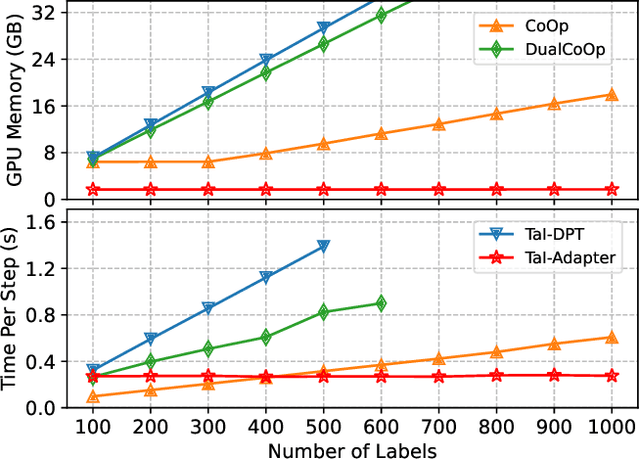Jian liu
OrderChain: A General Prompting Paradigm to Improve Ordinal Understanding Ability of MLLM
Apr 07, 2025Abstract:Despite the remarkable progress of multimodal large language models (MLLMs), they continue to face challenges in achieving competitive performance on ordinal regression (OR; a.k.a. ordinal classification). To address this issue, this paper presents OrderChain, a novel and general prompting paradigm that improves the ordinal understanding ability of MLLMs by specificity and commonality modeling. Specifically, our OrderChain consists of a set of task-aware prompts to facilitate the specificity modeling of diverse OR tasks and a new range optimization Chain-of-Thought (RO-CoT), which learns a commonality way of thinking about OR tasks by uniformly decomposing them into multiple small-range optimization subtasks. Further, we propose a category recursive division (CRD) method to generate instruction candidate category prompts to support RO-CoT automatic optimization. Comprehensive experiments show that a Large Language and Vision Assistant (LLaVA) model with our OrderChain improves baseline LLaVA significantly on diverse OR datasets, e.g., from 47.5% to 93.2% accuracy on the Adience dataset for age estimation, and from 30.0% to 85.7% accuracy on the Diabetic Retinopathy dataset. Notably, LLaVA with our OrderChain also remarkably outperforms state-of-the-art methods by 27% on accuracy and 0.24 on MAE on the Adience dataset. To our best knowledge, our OrderChain is the first work that augments MLLMs for OR tasks, and the effectiveness is witnessed across a spectrum of OR datasets.
Text as Image: Learning Transferable Adapter for Multi-Label Classification
Dec 07, 2023



Abstract:Pre-trained vision-language models have notably accelerated progress of open-world concept recognition. Their impressive zero-shot ability has recently been transferred to multi-label image classification via prompt tuning, enabling to discover novel labels in an open-vocabulary manner. However, this paradigm suffers from non-trivial training costs, and becomes computationally prohibitive for a large number of candidate labels. To address this issue, we note that vision-language pre-training aligns images and texts in a unified embedding space, making it potential for an adapter network to identify labels in visual modality while be trained in text modality. To enhance such cross-modal transfer ability, a simple yet effective method termed random perturbation is proposed, which enables the adapter to search for potential visual embeddings by perturbing text embeddings with noise during training, resulting in better performance in visual modality. Furthermore, we introduce an effective approach to employ large language models for multi-label instruction-following text generation. In this way, a fully automated pipeline for visual label recognition is developed without relying on any manual data. Extensive experiments on public benchmarks show the superiority of our method in various multi-label classification tasks.
 Add to Chrome
Add to Chrome Add to Firefox
Add to Firefox Add to Edge
Add to Edge